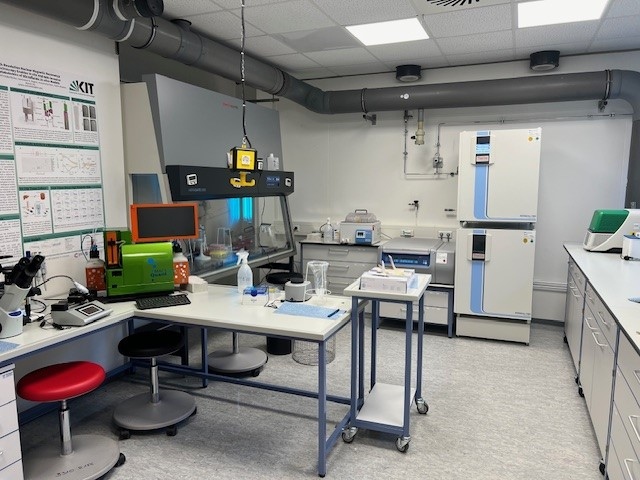Biological Model Systems (BMS)
Welcome...
The core objective of our group – which is interdisciplinary in nature – is the research and development of microfluidic in vitro models that are compatible with nuclear magnetic resonance (NMR). These models are utilized in fundamental research, pre-clinical studies and the assessment of drug safety.
Our research contributes to the research program Materials Systems Engineering (MSE), Topic 5: Materials Information Discovery, in the research field „Information“ as defined by the Helmholtz Association. Link to MSE website.

Subject areas
The development of 3D in vitro models aims to replicate the complex biological processes of specific organs under both healthy and pathological conditions. These models facilitate investigations of cellular metabolism and its regulation, thereby enhancing our understanding of cellular mechanisms. To this end, innovative microfluidic chips are engineered for seamless integration into nuclear magnetic resonance (NMR) systems, enabling real-time metabolomics analysis.
Why is it important to understand the cellular metabolism?
A persistent challenge in medicine is the lack of appropriate therapeutic interventions for many serious diseases. This is partly due to a lack of understanding of the underlying pathophysiology needed to identify new targets for new drugs. Recent research has shown that serious diseases such as infections and cancer can lead to metabolic imbalances in the uptake of essential nutrients, including amino acids, lipids and sugars. This metabolic imbalance can have an impact on cellular pathways and thus directly contribute to disease progression. However, the mechanisms that regulate this imbalance and the way in which cellular metabolism influences molecular mechanisms in specific diseases remain to be fully elucidated. A better understanding of these mechanisms could facilitate the identification of novel therapeutic interventions for serious infections and certain cancers.
What are the key benefits of NMR technology in facilitating our understanding of cellular metabolism?
Current in vitro models are limited to end-point measurements. This leads to destruction of the 3D in vitro system and cell analysis in a highly artificial environment, which affects the reliability of the studies. In addition, the current methods used in metabolic research are limited in scope, with only certain parameters being studied. However, it is important to note that cellular metabolites contain a greater number of compounds than these methods can account for. To overcome these limitations, our innovative platform integrates state-of-the-art microfluidic lab-on-a-chip technology with high-resolution NMR spectroscopy, enabling simultaneous, non-invasive and quantitative analysis of a wide range of metabolites.

Our Masterstudent Ms. Manasi Chavan receives the HyPERiOn scholarship. In her project she will develop a novel NMR-compatible microfluidic model system for the investigation of cellular metabolism during infectious diseases.

The construction of the new cell culture laboratory has been completed and the facility is equipped with cutting-edge instrumentation representing the latest technological advancements. This laboratory will facilitate the development of innovative in vitro models in the domain of cell biology and metabolomics research.

